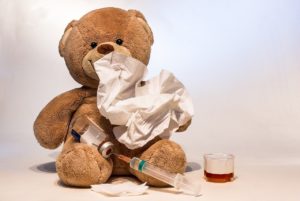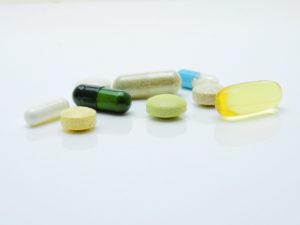We’ve spent months in lockdown due to the COVID-19 pandemic, and things are now starting to open up just in time for summer activities. But while the number of infections has begun to level out in most states, this does not mean that the virus is no longer out there. In some states, infection rates are still rising, but summer camps and swimming pools are opening up anyway. That of course may leave you wondering:
Is swimming safe? Can you get COVID-19 from others in the water?
In order for Sars-CoV-2 to infect you, it has to first survive in the environment. While we know that this virus can survive for up to 72h on some surfaces and for several hours in the air, there is less information about how it survives in water. The ability of a virus to survive and remain infectious in an environment depends on several conditions:
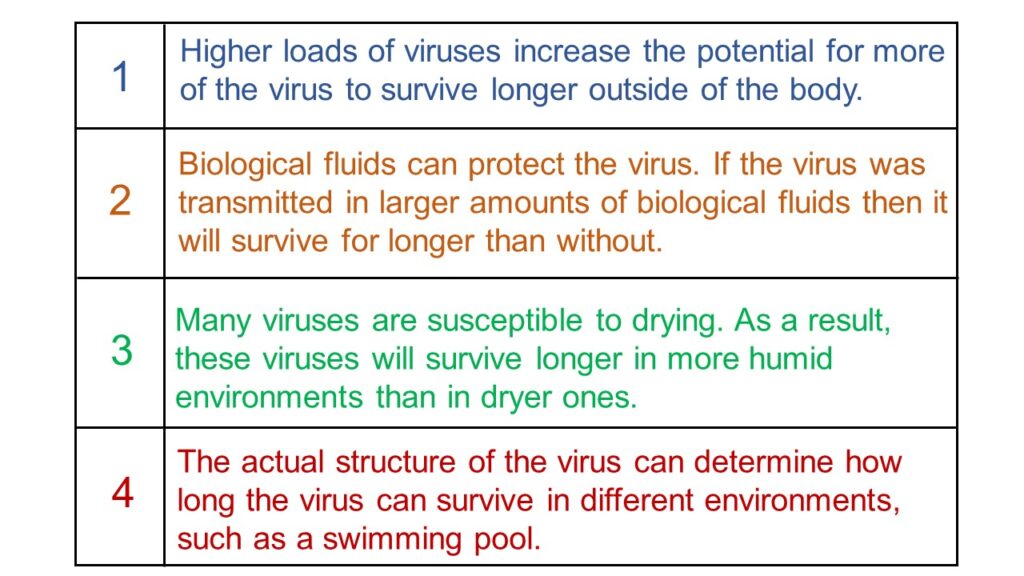
What do we know about the survival of Sars-CoV-2 in water?
In short, we know virtually nothing about how this particular virus acts in water, and especially in swimming pools. It simply hasn’t been tested yet. However, SARS-CoV-2 is a type of coronavirus, and we know more about the stability of coronaviruses in general and how they behave/survive in water. Here’s what we know:
1. Coronaviruses are enveloped viruses, which make them less stable in water and in general.
This sounds counter-intuitive. Would a virus that is wrapped in something be more stable than one that is not? But for enveloped viruses, the fragile envelope is critical for the function of the virus and its ability to bind to the cells that it will infect. So:
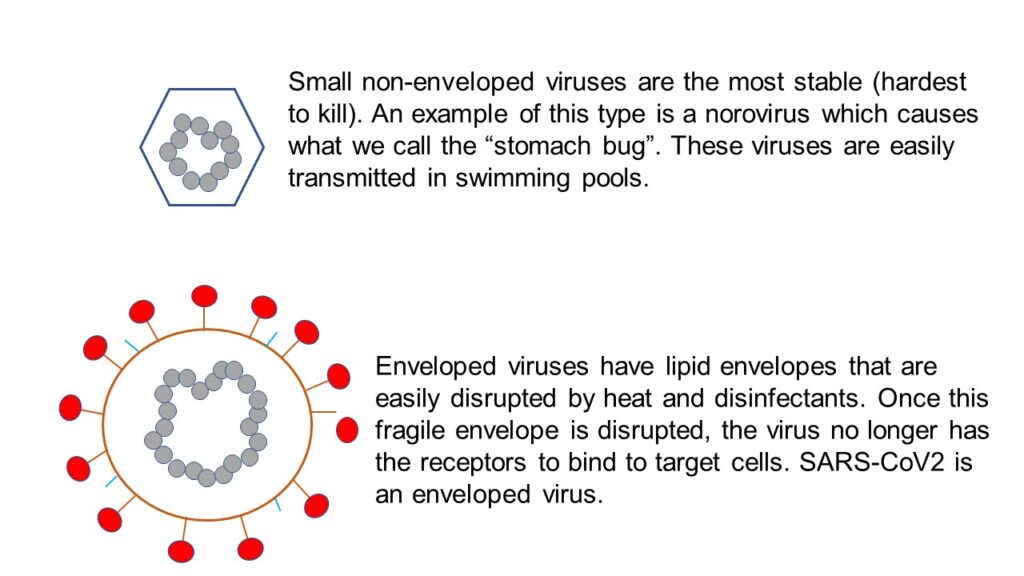
2. Coronaviruses are very sensitive to chlorine.
Studies of other coronaviruses show complete inactivation at chlorine levels of 0.5mg/L water(or 0.5ppm). Pools are required to have chlorine levels of at least 1mg/L water (or 1ppm), though most have a lot more than this. So pools likely have enough chlorine to inactivate viral particles that are released into the water, and this can happen in as little as 20 seconds.
3. Coronaviruses are sensitive to heat.
Studies of coronaviruses showed that while the viruses can persist for over 14 days in cool water (4℃ or 40℉), viral particles were only able to persist for only 2 days in water that was warmer (20℃ or 68℉). So, if the pool you’re swimming in is warmer, this will help to inactivate any virus that passes into it.
4. UV light can help to deactivate the virus.
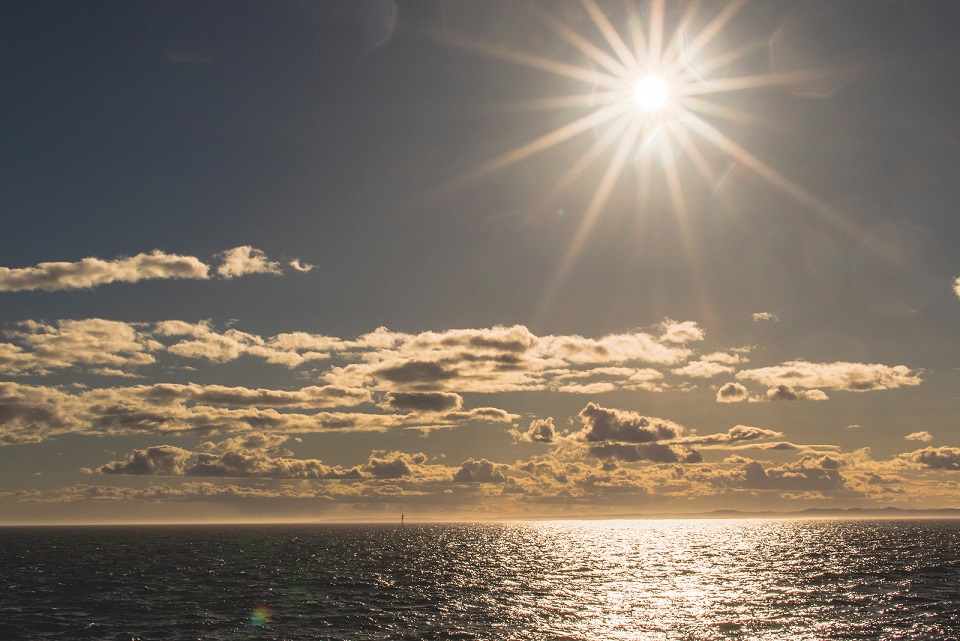
In this case, the study was conducted on the coronavirus that causes COVID-19. Exposure of the virus to UV light inactivated the particles partially, but not completely. If the water sources you’re swimming in is outside, both you and the water will likely be exposed to a lot of sunlight, which contains UV light. This may help to inactivate viral particles in the water.
5. SARS-CoV-2 is found in stool, but there has not yet been a demonstrated case of fecal-oral transmission.
Ingestion of pathogens that originated in (yuck) someone’s feces is the main way that those pathogens tend to spread through water. If fecal-oral transmission is non-existent, or even less common, then it’s less likely that viral particles from someone else will travel through the water and infect you. I still wouldn’t recommend drinking the pool water, though.
What about saltwater pools?
It is a common misconception that saltwater pools don’t have any chlorine. In fact, while they tend to have lower levels of chlorine than a regular pool (which has about 2-3ppm of free chlorine), they still have chlorine (1-3ppm), and this is above the amounts shown to inactivate coronaviruses. Rather than getting their chlorine directly from tablets or other chlorine treatments, saltwater pools get their chlorine when the salt in the pool is broken down by a process called electrolysis.
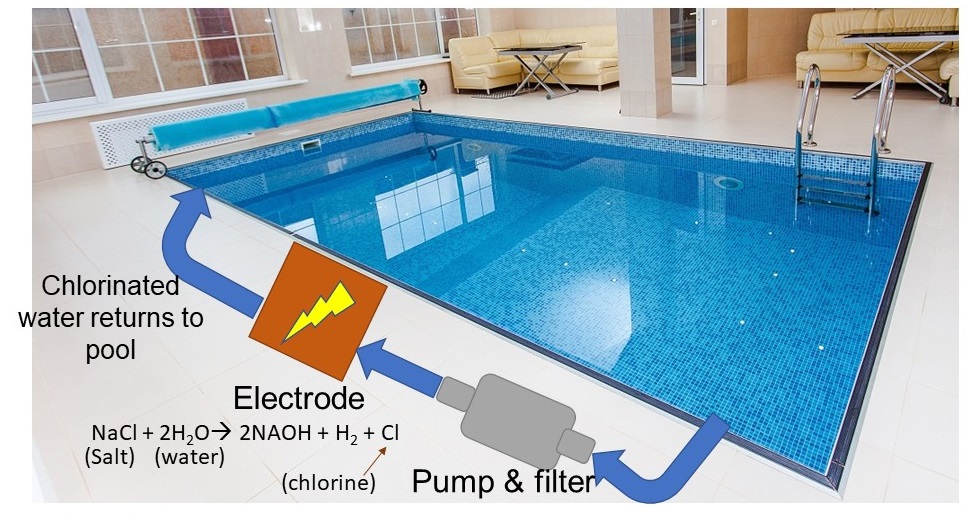
This process releases the chlorine from the salt molecules to help disinfect the pool. So, saltwater pools are likely not more risky than regular pools in terms of SARS-CoV-2 transmission. The water should still effectively kill the virus.
How about natural water sources?
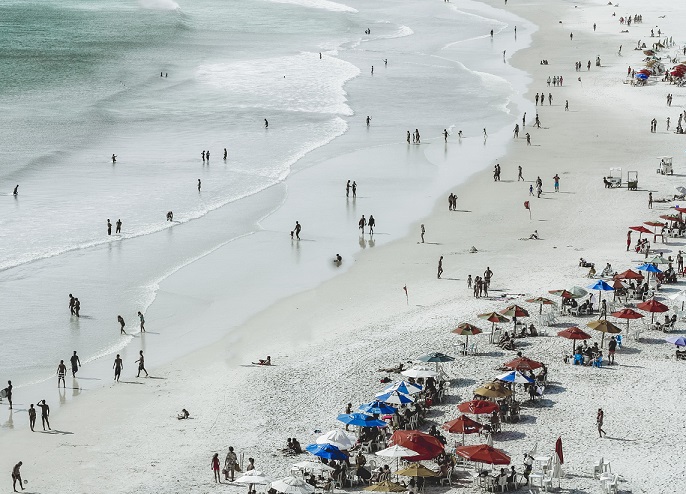
At this point, Sars-CoV-2 has been detected in water sources, but when scientists attempted to culture the virus from those water samples, they were not able to get it to grow. This indicates that there may not be many particles in there that are still infectious. Natural water sources are, of course, not generally treated with chemicals, so we don’t really know how safe it is to swim in those sources.
Most lakes and rivers tend to be large, which means that viral particles released from other swimmers would disperse widely. Exposure to fewer viral particles generally means a lower risk of infection. Also, the salt in marine waters would likely be quite harsh to the vulnerable coronaviruses. There’s really not enough out there to tell us how safe it is to swim in these natural environments, especially when there are many other swimmers around. A situation like this probably wouldn’t be advisable:
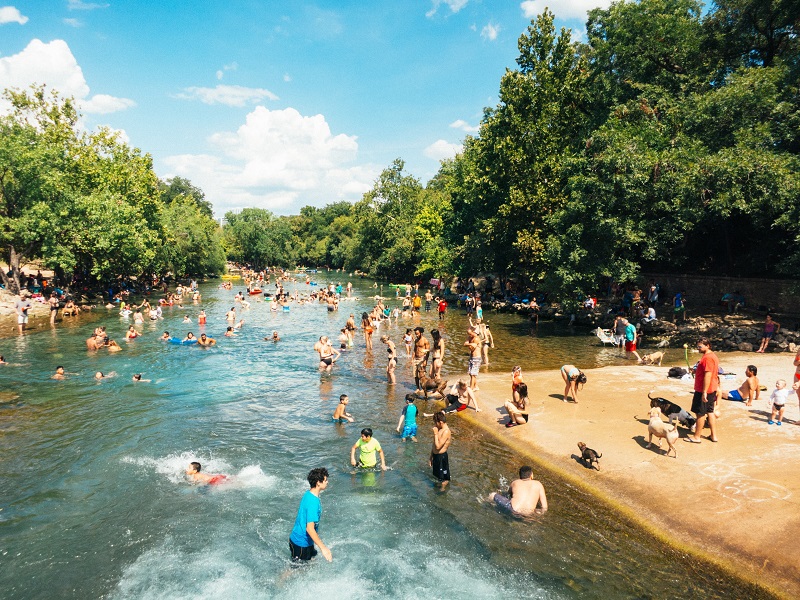
In this case, many people are close together AND it’s fresh untreated water.
What should we consider when making plans to go swimming?
There are ways to reduce the risk of contracting COVID-19 in any situation, and summer fun is no different. Here is what you can do to decrease your chances of infection during your summer fun:
1. If you are feeling sick (either respiratory illness or gastrointestinal symptoms), do not go in the pool until your symptoms are completely gone or, even better, you’ve been given a negative COVID-19 test result. This will prevent transmission to others.
2. If you’re swimming in a pool, make sure it is properly treated either with salt or chlorine to maintain free chlorine levels above 1ppm.
3. Try not to swallow pool water to decrease the already low chance of fecal-oral transmission of the virus.
4. Stay at least 6 feet away from other swimmers. Remember that respiratory transmission is still the main way that the virus passes from person to person.
5. Wear a mask whenever possible. This is of course difficult when swimming, but it can be done when sitting outside the water.
What’s the take-home?
Based on what is known about the structure and stability of coronaviruses in general, a pool that isn’t densely populated is likely a safe place where your chances of contracting COVID-19 will be low. Salt water will also likely kill the virus, but the safety of smaller freshwater sources are less clear. The best safety measures you can practice are to keep your distance from others and wear a mask whenever possible.
Keep safe and happy swimming!




